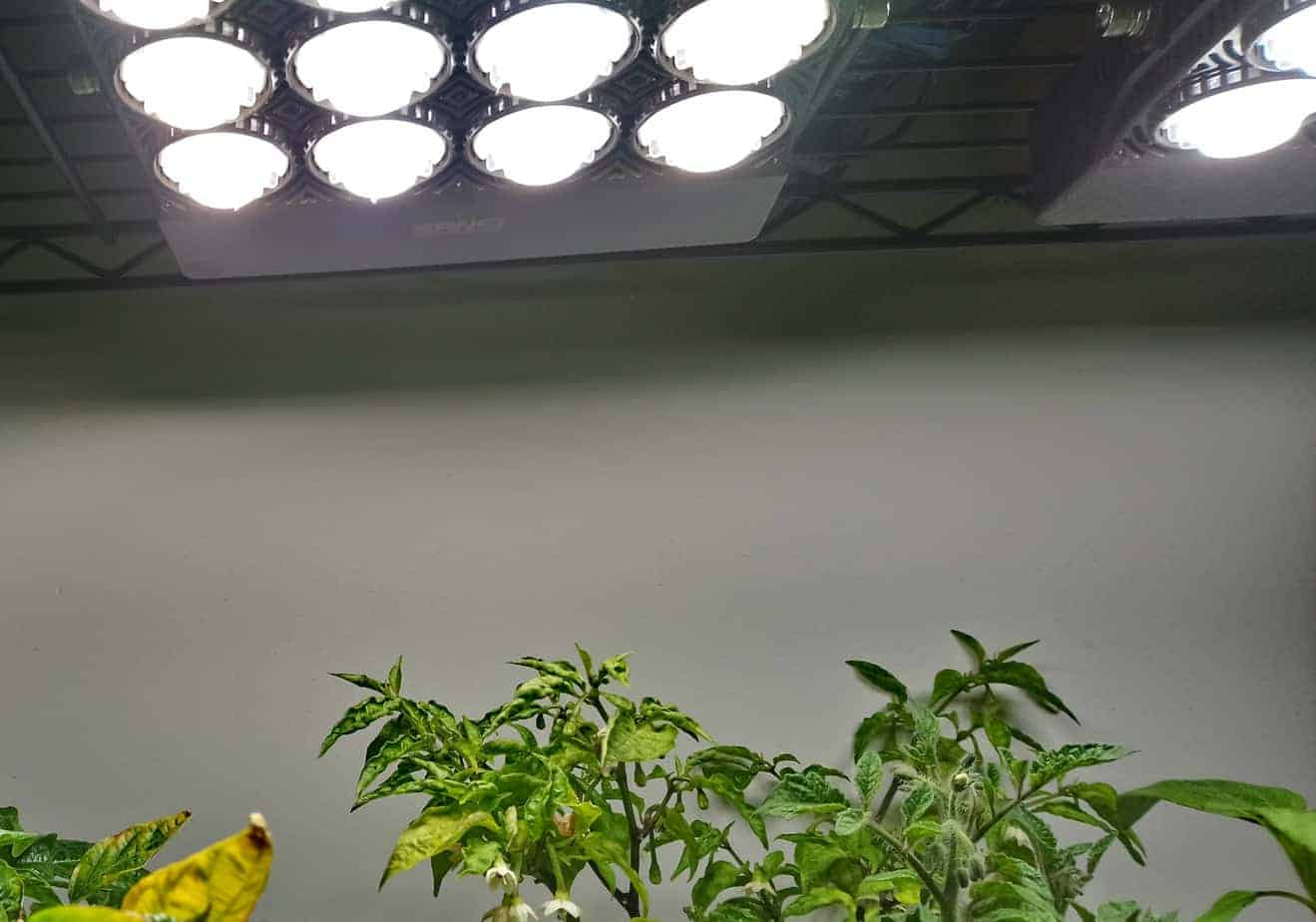Starting plants indoors from seed can be a rewarding way to get a head start before the main growing season or get started with an indoor garden. However, germination (the process by which a plant begins to grow from a seed) can sometimes be spotty.
Some of your seeds might not germinate, or they might take too long to germinate. This can lead to gardeners seeking other ways to increase germination success, such as trying to add fertilizer after planting seeds, adding extra water, or putting them under grow lights to get them started.
You may have heard that grow lights can improve germination. That is not necessarily the case, but as always, there are exceptions.
On this page:
Do You Need Grow Lights Before Germination?
In most cases, any source of light is unnecessary before germination, and grow lights in particular are not really useful at all for germination.
As explained below, light is not important for seed germination, with a few exceptions. However, grow lights are necessary for sprouted seedlings unless they are in a sunny window or otherwise getting direct sunlight.
The only benefit of grow lights before germination is that they can provide extra warmth which helps speed up germination. Germinating seeds at room temperature or slightly warmer is sufficient for most seeds, and some gardeners use a temperature-controlled seedling heat mat if they need extra heat.
Do Seeds Germinate Better in the Dark?
For most seeds, while they will still germinate with exposure to light, they germinate better in the dark. In some cases, such as with seeds in the onion family, light can actually inhibit germination.
If you think about it from an evolutionary standpoint, in nature, seeds with the most success will be those sitting on or in the soil. A sprout sitting on a rock or otherwise away from the soil would die even if it had the moisture and warmth to start the germination process.
Do Any Seeds Need Light Before They Sprout?
There are some seeds that actually need light before they sprout. These are mainly flowers, herbs, or vegetables with very tiny seeds.
These types of seeds can still germinate without light but sprout much better with light exposure. For example, celery is recommended to be surface-sown because the seeds are so tiny and germinate best with sunlight. Even lettuce seeds, which are less picky, sprout better with sunlight.
As a rule of thumb, you should plant seeds about two or three times deep as they are wide, so even if you bury tiny celery or lettuce seeds into the soil, about 1/4 inches deep is shallow enough to allow some light through. In nature, this is advantageous because small seeds don’t have enough stored energy to grow up through deep soil.
Does that mean you need a grow light to germinate these seeds? No. Ambient light from a room or next to a window will be enough.
If you are germinating seeds at home to grow and eat your own sprouts in a jar, it’s recommended to keep them out of indirect light.

When Should I Turn On My Grow Lights for Seedlings?
Seedlings should start getting light as soon as they appear. When you see the first sprouts emerge, you can turn on your grow lights.
If you leave your seedlings to grow without light, they will stretch and get leggy. This isn’t a problem for some vegetables like tomatoes, but most of the time it leads to weaker stems and more fragile seedlings when transplanting outdoors. If kept in complete darkness, seedlings will die.
The only exception is if you are growing microgreens. Often, microgreen growers will allow their sprouts to grow in the dark for a few days to become leggy on purpose. Then they will expose them to their grow lights, which perks up weak, yellow seedlings and turns them green. Leggy microgreens are much easier to harvest by cutting above the soil layer with a sharp knife or kitchen scissors.
Should Seedlings Get 24 Hours of Light?
In general, plants should not get 24 hours of light a day, and seedlings are no exception.
While it’s true that more light will lead to faster growth, and some plant species can be healthy with a 24-hour photoperiod, most plants need a period of darkness for plant metabolism.
For seedlings, you can keep them under 12 to 16 hours of light per day. Make sure to keep the lights close enough to the seedlings to keep them from getting leggy but far enough away to avoid overheating your seedlings (unless you like cooked sprouts).
What Kind of Grow Light Do I Need for Seedlings?
Unlike mature plants, seedlings can get away with much less powerful grow lights. Any kind of grow light, from LED grow lights to standard fluorescent lights.
If you already have T12 fluorescent lights, they can be used for starting seedlings, but seedlings will eventually outgrow the energy output of T12 bulbs. If you are buying a fluorescent grow light, T5 bulbs (especially T5 high-output bulbs) are brighter so they don’t have to be placed very close to the seedlings and can be used for larger seedlings.
LED grow lights are another option. The prices have gone down significantly over the years, and you can get full-spectrum white LED grow lights that are even better than the older pink/purple style of LED grow light that used to be more common. LED grow lights are energy efficient and can last for years, and you can get grow lights for under $100 that are strong enough to grow full-sized plants as well.
